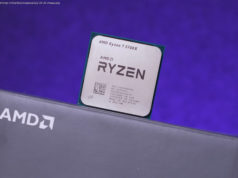There are three main iPhone models available, and prices vary significantly, so if you’re considering buying one, it’s important to make the right decision. We’ve used them all, and break down what makes each one great, and which model will be best for you depending on your requirements.
You’re on the edge of becoming an iPhone owner, except the choice of phones is causing a dilemma. The iPhone X is so tempting, but the screen of the iPhone 8 Plus is so lovely and large, and you could always save a little money and just get the more pocket-friendly iPhone 8. Then there’s the amount of storage space, and the color to consider.
It’s not a decision to be taken lightly. This is an expensive purchase, so which model is the right one for you? Here’s our easy guide to help you make the right choice, quickly.
Regardless of whether you choose the iPhone 8, iPhone 8 Plus, or iPhone X, they all come with the same version of Apple’s iOS operating system installed, and they will all get the same software updates, at the same time, for the next couple of years. So don’t worry about software, you’re covered.
The battery size differs, but the average performance remains the same because each model has different power requirements. Don’t expect more than a day of heavy use out of any iPhone, but you should survive without charging during a long day if use is only average. There’s no best choice here, just keep in mind that none will be winning any awards for long battery life. All three of these models support wireless charging, so make sure you pick up a wireless charging pad for added convenience.
Each iPhone comes with the option of two different sizes of internal memory — 64GB or 256GB — and none have a MicroSD card slot. You can pay for extra iCloud storage — 5GB is included and free — which can free up internal storage space on the device later on. We always recommend paying for as much storage as you can afford, due to the inability to physically increase it on an iPhone.
The iPhone 8 and iPhone 8 Plus are evolutions of the iPhone 7. They’re iPhone 7S models in all but name. On the back, only the camera lens — single on the iPhone 8, and double on the iPhone 8 Plus — separates them outside of size. Neither phone has a bezel-less display, and the don’t look as modern as many Android devices. The iPhone 8 Plus is 50 grams heavier than the iPhone 8, and it’s very noticeable.
Take a good look at the iPhone X. It’s representative of how future iPhone models will look, with a screen notch and an otherwise bezel-less design. We think it’s a great-looking phone, and the notch isn’t as evil as it’s made out to be. At 174 grams, it’s between the iPhone 8 and iPhone 8 Plus in weight, and is very manageable in-hand. On the back, the dual-camera lenses are stacked vertically, a decision that kicked off another industry trend.
The iPhone 8 and 8 Plus look old. The iPhone X looks cutting-edge, and it’s the one we’d choose.
The screen sizes vary between the three phones. The small 4.7-inch, 1,334 x 750 pixel iPhone 8 is exactly that — a bit small these days. Great if you have small hands, or never carry a bag, but if you’re coming from any modern Android phone, it’ll look miniature in comparison. The 5.5-inch, 1,920 x 1,080 pixel iPhone 8 Plus is more spacious, but it’s also a larger phone to handle. Finally, the 5.8-inch, 2,436 x 1,125 pixel iPhone X fits in the middle — because it has a taller, thinner 19.5:9 aspect ratio, it doesn’t look as big as the iPhone 8 Plus, despite being “larger.”
It’s an OLED screen on the iPhone X, compared to LCD screens on the iPhone 8 and 8 Plus, and it does look superb. The black levels are stunning, and video performance is excellent. The LCD iPhone screens are still some of the best available, and only by comparing them side-by-side will you really notice the difference. Yes, the iPhone X has a notch, which has become a symbol of hate and derision, but the truth is once you’ve used the phone for a week, you’ll forget it’s there.
Not only that, but you’ll be quietly thankful because the notch makes the iPhone X’s Face ID security system work. It’s currently the best face-recognition system in the business, and while we don’t think it’s a reason to buy the phone, it’s natural, fast, and reliable to use on a daily basis. On the iPhone 8 and 8 Plus, you have Touch ID for your fingerprint as the security system.
This is the first major decision you’re going to have to make before settling on which iPhone to buy — the size of the screen that suits you. In reality, the best way to judge this is to visit a store that carries all three and hold them. You’ll quickly know which one is right. We’d usually recommend getting the iPhone 8 Plus, as the larger, higher-resolution screen improves the user experience a lot. However, the iPhone X is very tempting due to its modern look and that glorious OLED panel.
If you’re still not sure after looking at the screens, or are now stuck between two models, then it’s time to turn you attention to the camera. Apple makes excellent, capable cameras that take great photos you’ll want to show off, but it’s worth going for a dual-lens iPhone over the iPhone 8. The iPhone 8’s 12-megapixel, f/1.8 aperture single-lens camera is rather feature-light by today’s standards. It’s still good, but definitely not that exciting on a creative level, unlike its sister phones.
The iPhone 8 Plus and the iPhone X have the same dual-lens 12-megapixel camera array. The main lens has an f/1.8 aperture, while the secondary telephoto lens has an f/2.8 aperture. These lenses give a 2x hybrid zoom, and produce a portrait mode with some special lighting effects. It’s excellent, and consistently performs well in head-to-head tests. You’ll get a lot more enjoyment out of taking photos with the 8 Plus or the iPhone X than you will with the iPhone 8.
Perhaps the most important decision you’ll make is how much you want to spend on a new iPhone. The cheapest is the iPhone 8 with 64GB for $700 without a contract, directly through Apple. The most expensive is the iPhone X with 256GB, which costs $1,150. In the middle is the cheapest iPhone 8 Plus with 64GB at $800. It costs an extra $150 to buy a 256GB iPhone 8 or iPhone 8 Plus, and if you just want the cheapest 64GB iPhone X, then you’ll hand over $1,000.
For photographs: Either the iPhone X or the iPhone 8 Plus will satisfy those looking to take great photos. They both have the same rear cameras; but the front camera in conjunction with the depth sensor on the iPhone X has the ability to generate Animoji and Memoji — a selling point, if we ever heard one.
For business: The iPhone X is going to turn more heads in the boardroom, but the iPhone 8 Plus’s big screen makes reading and typing easier than on the X or iPhone 8’s smaller screens. It’s still got the better camera too, so it’s not just going to be useful at work. We’d pay up for the 256GB model though, if it has to deal with more apps and digital content.
For the first-time iPhone owner: If this is going to be your first iPhone and you need to stretch your budget, or perhaps you don’t need the latest tech, Apple still sells the iPhone 7 and the iPhone 6S.






